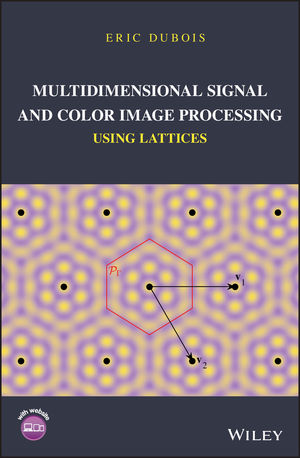Multidimensional Signal and Color Image Processing Using Lattices

Multidimensional Signal and Color Image Processing Using Lattices
Author: Professor Eric Dubois is Emeritus Professor at the University of Ottawa, Canada, a Life Fellow of the Institute of Electrical and Electronic Engineers and a Fellow of the Engineering Institute of Canada. He is a recipient of the 2013 George S. Glinski Award for Excellence in Research from the Faculty of Engineering at the University of Ottawa. His current research is focused on stereoscopic and multiview imaging, image sampling theory, image-based virtual environments and color signal processing.
Publisher: Wiley
URL: www.wiley.com/go/Dubois/multiSP
Year: 2019
This volume develops the theory of multidimensional signal processing where input and output are either scalar or vector-valued signals. Vector-valued signals are specifically used to model color images. The approach is largely based on lattices. Non-rectangular sampling is very widespread; for example, virtually every camera and display device incorporates non-rectanglular sampling. Thus, the book considers signals sampled on lattices from the outset, with rectangular sampling as a special case. Lattices are also used to describe signal periodicity, which is key to fast Fourier transform algorithms. While most treatments use normalized basis-dependent representations for non-rectangular sampling, this approach obscures much of the geometrical and scale information of the signal. In contrast, this book uses actual units of space-time and frequency. Basis-independent representations are used as much as possible, and the basis is introduced where needed to perform calculations or implementations. Basic features of the book include:
- an entire chapter on lattices, giving the reader a thorough grounding in the use of lattices in signal processing;
- extensive treatment of lattices as used to describe discrete-domain signals and signal periodicities;
- separate treatment of continuous-domain signals, discrete-domain signals and both continuous-domain and discrete-domain periodic signals;
- chapters on the vector-space representation of color, and processing of vector-valued color signals;
- chapters on sampling and reconstruction, random field models, and symmetry invariant signals;
- supplemented throughout with MATLAB examples and accompanying downloadable source code.
- MATLAB code for the examples and figures in the book are available on the Companion Web Site found at http://www.site.uottawa.ca/~edubois/mdsp/. On this web site, there is also a solutions manual for all the problems included in the book.

